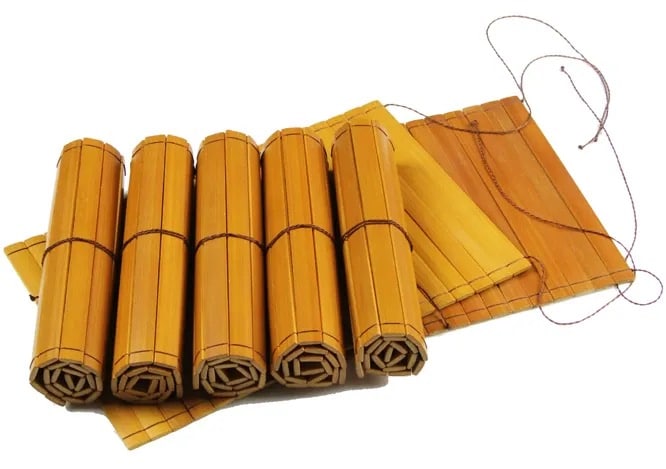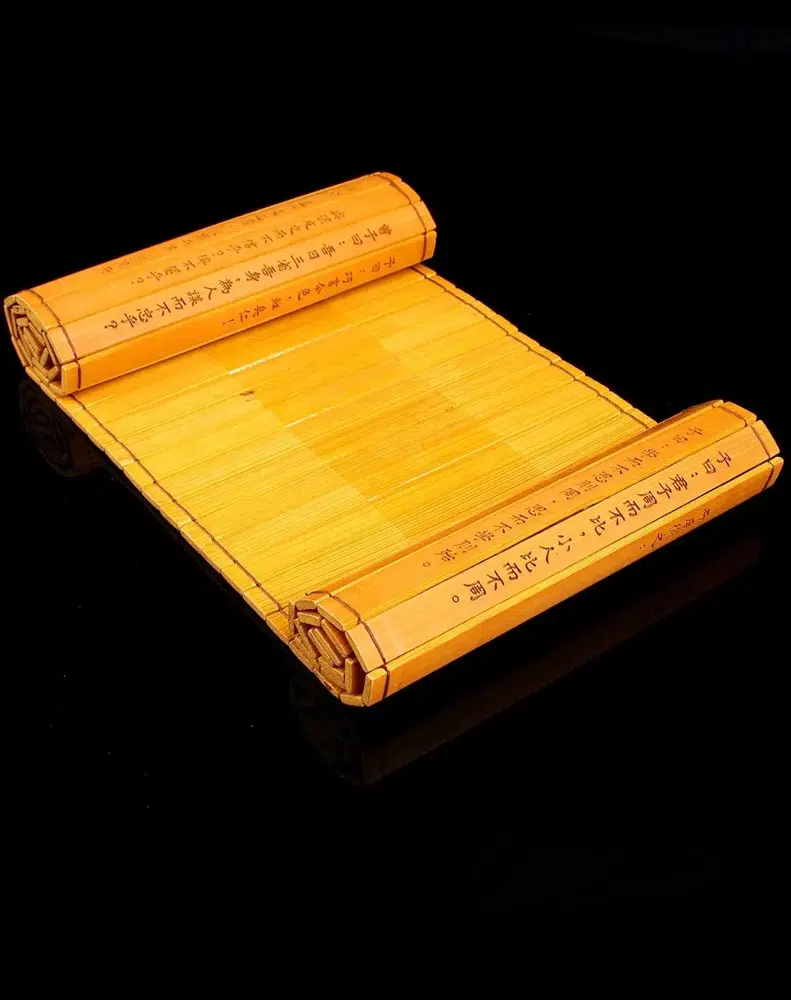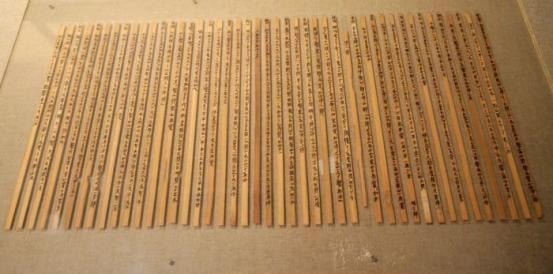Ancient China has a long history of writing, even before the invention of paper. Most documents predating the invention of paper were written on wooden slips and bamboo, and examinations of ancient Chinese history show that these were major writing mediums as far back as the Zhou Dynasty (between 1046 and 256 BCE). Alongside other writing materials such as silk, stone slabs, bronzeware, and oracle bones, the bamboo and wooden slips were the easiest and cheapest to produce.
We will take a close look at these materials and see what led to their popularity in this article.
Who invented bamboo and wooden slips?

The exact origin and who invented bamboo and wooden slips are unclear – the only clear facts are that they acted as the main writing materials because of their widespread availability and that they existed before the invention of paper.
During the modern era, their discovery occurred during the early years of the 20th Century, with unearthing efforts uncovering more than 300,000 pieces that contained beyond 3 million Chinese characters.
When were bamboo and wooden slips invented?

Many records mention the bamboo and wooden slips, especially those written during the Zhou Dynasty, as well as after the Spring and Autumn period (770 to 476 BCE). Paper only came into major use during the second century AD, especially during the Jin Dynasty (317 to 420 AD).
Most wooden slips that have been discovered in the modern era originate from the Warring States Period (between 475 and 221 BCE), as well as the dynasties of the North, South, Jin, and Wei (between 420 and 589 AD). However, the earliest wooden slips are thought to originate from the late Shang period (1250 to 1046 BCE), while the earliest found pieces of bamboo and wooden slips date back to 433 BCE.
While bamboo and wooden slips came in handy to record information, they were likely too fragile to survive the effects of weathering and time. Therefore, they were not recognized as valid writing materials until the early 1920s during excavation efforts.
What were bamboo and wooden slips used for?

These materials were used to record various forms of information, and if the text was quite long, the wooden slips would be joined together using leather, silk, or hemp to form a jiandu or jiance, a folding book. Before use, bamboo went through a “roasting” process to prevent attacks and decay, while wood was just polished before use. Scrolls were formed by tying several strips together for easier recording and preservation.
Each bamboo or wooden slip measured as wide as two chopsticks and as long as a single chopstick. Additionally, wood slips tended to be used for shorter messages, while bamboo worked better for longer passages and books.
Therefore, these bamboo and wooden texts are great resources when you want to know the social life and administration of ancient China, as well as the preservation of ancient texts, unknown scholarly texts, and transmitted texts.
Conclusion
Not much is known about the beginnings of wooden strips and bamboo, except their important status as a writing material before the invention of paper.